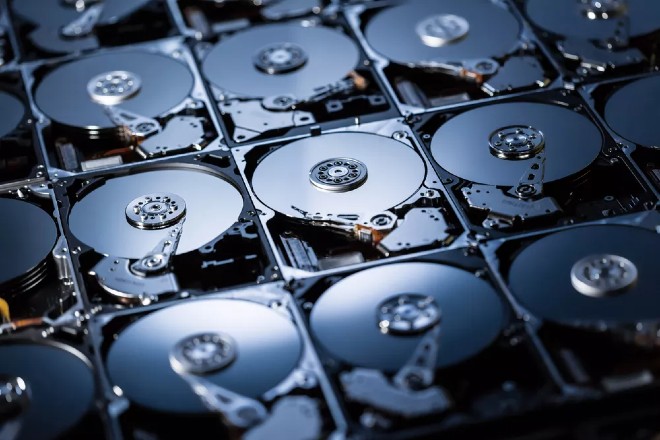NVMe 2.0 protocol supports both PCIe-connected HDDs
Currently, the SATA 3.0 connection cannot meet the data transfer requirements of 7200 rpm HDDs. Due to the needs of the market as well as the general development trend, HDD hard drives will need to upgrade bandwidth beyond the maximum speed of SATA 3.0. This will be met when switching to PCIe connectivity with NVMe 2.0 support.

This change to NVMe 2.0 will also mark the decline of the SATA protocol in general, which has not been updated in more than 12 years. Removing SATA and switching all hard drives to a single NVMe protocol frees up space on the motherboard, simplifies connections.
Recently, Seagate also launched a new HDD with March.2 technology that can reach speeds of 524 MB/s. This is a speed that was previously only available on SSDs. In the next few years, HDDs with technology like March.2 will be very popular when the hard drive capacity exceeds the 20TB mark.
However, equipping hard drives like this is very expensive because they possess proprietary technology. Meanwhile, when NVMe 2.0 supports PCIe-connected HDD, it will help simplify the ecosystem because only one type of storage connection is needed.
Currently, there are no HDD products on the market that support NVMe, but this will happen in the near future.
You should read it
- How to install SSD hard drive NVMe M.2?
- What is a NVMe drive? Compare NVMe drive with SSD drive
- Reasons to use SATA SSD hard drive
- PCIe 5 NVMe SSD vulnerable to thermal throttling, shutting down due to overheating
- Try WD Blue SSD SN550 hard drive: super speedy NVMe standard
- Many users report that Windows 11 causes NVMe SSDs to slow down
- What is NVMe drive? Should I buy?
- How to turn off the hard drive after not working in Windows 10
- Microsoft fixes that blue image on Windows 10 when connecting an NVMe SSD
- Intel SSD 660P soft-drive price in Vietnam: NAND QLC memory chip, 512 GB version less than 3 million
- Things you need to know about NVMe SSDs
- How to identify hard drive failure, hard drive failure, bad hard drive on Windows
May be interested

Norton antivirus adds Ethereum mining feature

Sam - What's special about Samsung's virtual assistant Sam 3d?

Microsoft announced the 'What's next for Windows' event scheduled to take place on June 24, what to expect?

Learn Dictate, Microsoft's multilingual dictation feature

Samsung launches the first ZNS SSD with dual ports, 4 times longer life

Warning: Huawei's 4G USB contains a serious security flaw






 What is the difference between PCIe 3.0, PCIe 4.0 and PCIe 5.0?
What is the difference between PCIe 3.0, PCIe 4.0 and PCIe 5.0? NVMe PCIe 5.0 DRAM-less SSD launched at extremely attractive price
NVMe PCIe 5.0 DRAM-less SSD launched at extremely attractive price PCIe 5 NVMe SSD vulnerable to thermal throttling, shutting down due to overheating
PCIe 5 NVMe SSD vulnerable to thermal throttling, shutting down due to overheating What is PCIe 4.0? Should I upgrade?
What is PCIe 4.0? Should I upgrade? Things you need to know about NVMe SSDs
Things you need to know about NVMe SSDs PCI Express (PCIe 6.0): What's New and When Will It Be Available?
PCI Express (PCIe 6.0): What's New and When Will It Be Available?